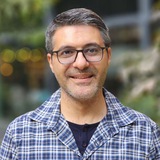group-telegram.com/beautinesswriter/669
Last Update:
Themes of the conference
The study of the Battle of Badr begins with a detailed exploration of the way in which its narratives have been elaborated, transmitted and reworked over the centuries. This battle, often regarded as the first military triumph of the Muslim community under the leadership of Muḥammad, has given rise to a multitude of oral and written traditions. Researchers are invited to examine the anecdotes, poems, lists of combatants and other traditions, which have been integrated to form a coherent narrative. Analysis will focus on how these narratives were compiled in historical works and biographies of the Prophet (sīra, maghāzī). Particular attention will be paid to the integration of these traditions into different genres of Islamic scholarship, such as Qur’anic commentaries (tafsīr), Islamic jurisprudence (fiqh), prophetic traditions (ḥadīth), theology (kalām) and genealogy, in order to show how these traditions reinforce each other to legitimise various religious authorities, associating the event of Badr with a divine intervention in favour of the Prophet. Contributors are also invited to explore how these narratives have circulated throughout the different eras and regions of the Islamic world. Contributions may address the reception of the Badr narratives in various cultural and political contexts and analyse how they have been adapted to meet the needs and expectations of different Muslim communities.
The Battle of Badr continues to resonate strongly in modern and contemporary Islamic history. Researchers are encouraged to examine the mutual influences between the Badr narratives and the socio-political contexts in which they have been reproduced, particularly in periods of religious conflict or reform, in order to show how the Battle of Badr has been used to legitimise or challenge the powers that be. This theme will look at the political and religious uses of Badr in the Ottoman era, in modern and contemporary contexts, as well as during the Iran-Iraq war, in propaganda and in various inter-state conflicts. Researchers are invited to explore how the memory of Badr is mobilised in current political discourse and practice, and how it is used to legitimise contemporary politico-religious causes. This theme will also address the way in which the Badr narratives are reinterpreted in the light of the current challenges facing Muslim societies, through the analysis of continuities and breaks with traditional interpretations.
The aim of this theme is to study the Battle of Badr through the various archaeological materials, epigraphy and iconographic supports, in order to verify the existence of a possible gap between the written sources and the existing material traces. Researchers will be invited to examine the contribution of these sciences, which shed new light on this high-profile event. The study of illuminated Ottoman and Persian manuscripts, such as the Siyar-i Nabī (1595) commissioned by Sultan Murad III and preserved in the library of the Topkapı Palace Museum in Istanbul, also offers a possible field of investigation, which would enable us to renew our knowledge of this famous confrontation. Analysing the illustrations of the Battle of Badr not only provides an opportunity to analyse the differences in treatment between the written word and the image, but also to see how different artistic traditions treated the event. In addition to printed works, the study of manuscripts should finally make it possible to highlight the many interactions between the account of Badr and its readers, materialised by the various notes they left in the margins of the chapters devoted to the battle.
@beautinesswriter
